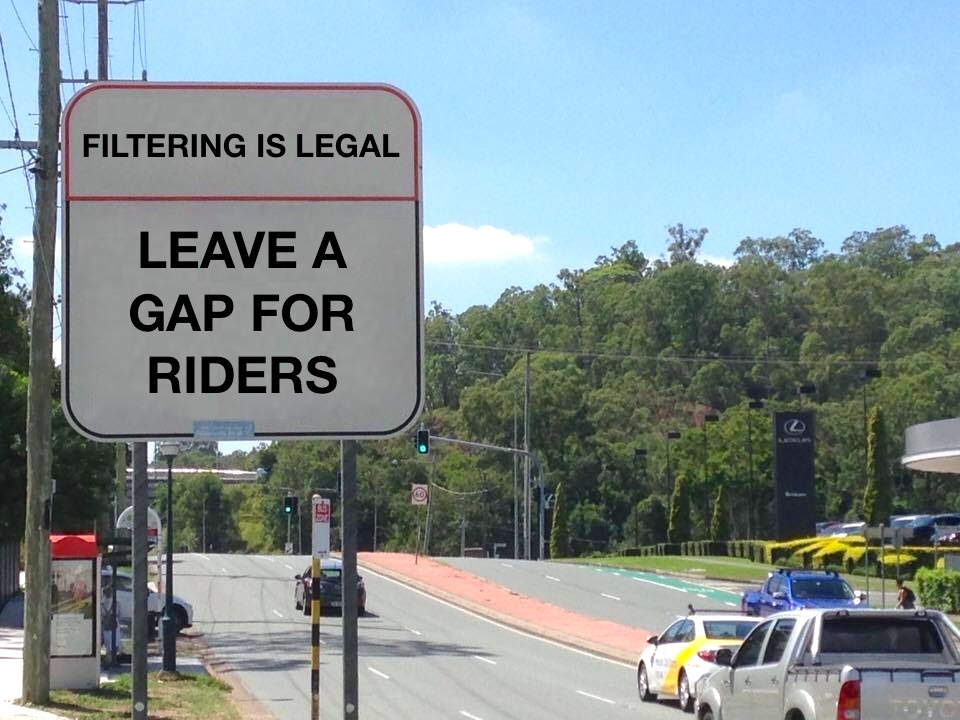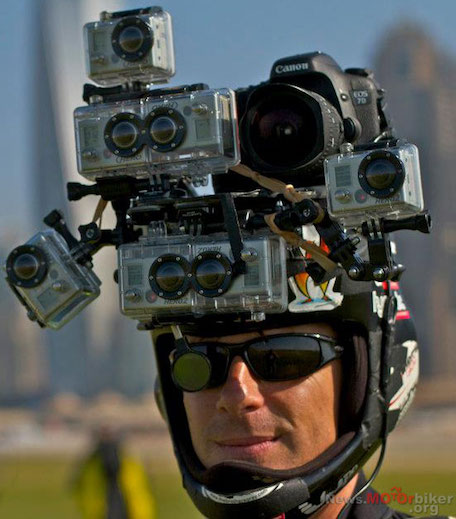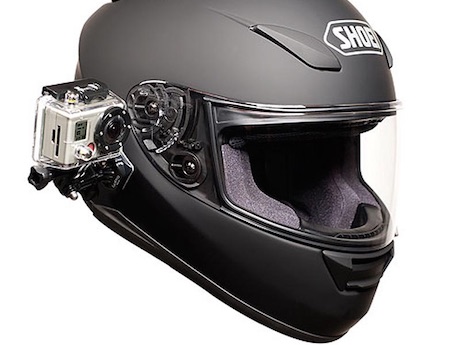Helmet cameras, tinted visors, standing on the footpegs and other rules affecting riders have moved toward uniformity with the publication of new Australian Road Rules.
The ARR, published by the Australasian Parliamentary Council’s Committee, have been welcomed by the Australian Motorcycle Council, which has been lobbying tirelessly behind the scenes for uniformity of rules across the states.
The uniform road rules require the agreement of all states and territories who work together with the National Transport Commission.
The uniform rules include for the first time helmet standards, helmet labelling, standing on the footpegs, lane filtering and other rules affecting riders.
However, the rules could still be implemented differently by State Regulatory Authorities and they also allow for some variances in lane filtering rules, such as Queensland’s “edge-filtering” rule.
Helmet cams uniformity
In a significant boost for riders worried about inconsistent helmet rules across state boundaries, changes to Rule 270 simplify the labelling requirements and don’t include Australian labelling.
The rule now formalises the use of European-standard helmets and clarifies the standards compliance for helmets at the point of manufacture.
That should mean riders are allowed to wear tinted visors in daytime and add bluetooth and camera devices so long as they do not drill holes in their helmet.
“Finally some sanity on this one,” says long-time helmet campaigner Wayne Carruthers.
The new ARR also ratify changes in many states to allow riders to stand on the footpegs and take one hand off the handlebar.
However, there is no nationalised rule on motorcycles and scooters using bus lanes as is allowed in NSW and ACT, although the NSW “Bus Only” rule proposal was dropped.
Good win for riders
“Overall a good win for the rider associations and AMC who worked together to achieve the outcome,” Wayne says.
“Now it will be the work of ensuring all the states implement the rules and don’t deviate with their own variations.”
AMC chairman Shaun Lennard says it has been working with motorcycle advocacy groups in all states and territories to achieve uniformity.
“The AMC congratulates the National Transport Commission (NTC) for managing the process to achieve national agreement on Road Rules for the wearing of motorcycle helmets and for lane filtering,” he says.
“We are pleased that parochialism has been put aside in order to achieve an excellent result for all road users.
“Motorcycle advocates in every state and territory have been quietly working with their local road authorities in order to help them understand the specific problems with lack of uniformity and defects in the old rules that disadvantaged riders.
“Motorcyclists look forward to each jurisdiction endorsing the nationally-agreed Rules, by immediate adoption into local Road Rules.
“Many Road Rules have had unique variations between states that rely upon ‘another law of this jurisdiction’. As a result, what is legal in one State is illegal in another.
“Consistency was the whole reason behind the agreement to, and adoption of, National Road Rules in 1999. The new rules covering these aspects of motorcycling need to be adopted unchanged, as agreed under this process.”
New rules



The newly-published national rules include:
- Formalise the use of European helmets certified to UN/ECE 22-05 which provide safer helmets and a more competitive market;
- Clarity over standards compliance for helmets at the point of manufacture only (current rules demand a helmet must be in exactly the same condition as when sold, unmarked by use and include all original packaging and booklets, which is impossible);
- Remove legally-grey areas, such as use of dark visors in bright daylight, and use of communicators and cameras;
- Provide uniform rules for lane filtering (currently four different sets of rules exist, with considerable variation); and
- Tidy up some small variations resulting from unclear definition criteria.
Groups involved in the process include the AMC, Motorcycle Riders Association of Queensland, ACT and South Australia; Motorcycle Council of New South Wales; Victorian Motorcycle Council; Motorcycle Riders Association of Western Australia; Tasmanian Motorcycle Council and Rider Awareness Northern Territory.
Shaun paid special tribute to the hard work of of Guy Stanford (NSW) and Rob Salvatore (Victoria).




